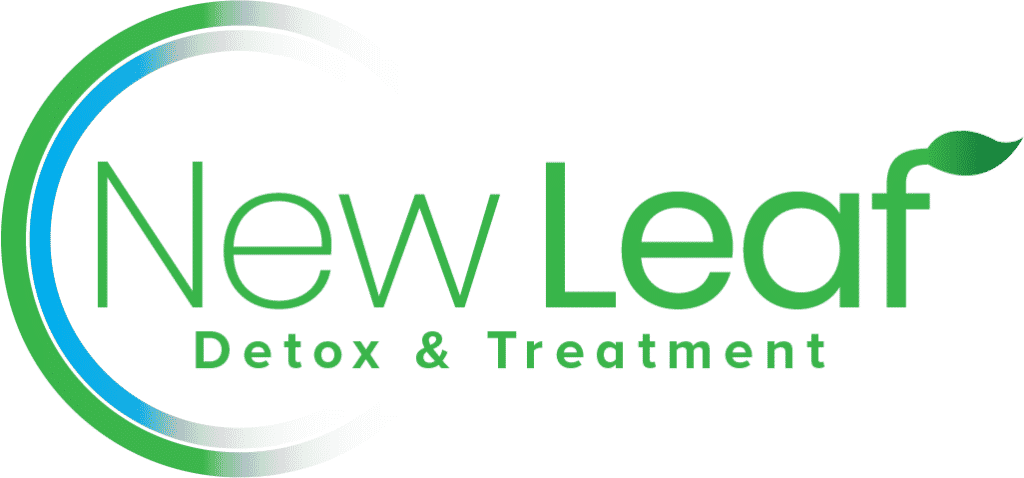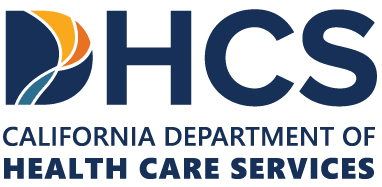Table Of Contents
A journey of a thousand miles begins with a single step.
- Lao Tzu
Ready, Set, Rehab
Scroll over the dots bottom-to-top on the infographic for a visualization of the process of getting into treatment at New Leaf Detox & Treatment.

1. Patient calls New Leaf at 949-674-3686
1 of 152. Admissions initiates pre-assessment
2 of 153. Insurance is verified
3 of 154. Case is reviewed and staffed by Medical Director and Clinical Director
4 of 155. Medical history and co-occurring disorders are evaluated.
5 of 156. Criteria for admissions is evaluated.
6 of 157. Problem list is determined.
7 of 158. Preliminary diagnosis is made.
8 of 159. Preliminary treatment plan is created.
9 of 1510. Patient and provider engagement continues.
10 of 1511. Patient is scheduled for treatment.
11 of 1512. Patient enters treatment.
12 of 1513. Patient meets with Medical Director and Clinical Director.
13 of 1514. Customized treatment plan is finalized.
14 of 1515. Patient begins treatment.
15 of 15Entering residential inpatient treatment or rehab is a profound and dramatic event for those grappling with addiction. It’s a heroic attempt to fight the devouring forces of alcohol and drugs and to save one’s life.
The decision to seek treatment for drug or alcohol addiction is the most generous act of self-love a person can make. It’s a courageous declaration of self worth, and reveals a strong desire to rewrite a history of addiction into a different life story.
The commitment to enter rehab is usually made after an epic event forces the addicted person to wake up to the devastation caused by alcohol and substances. It could be health and medical scares, abandonment by loved ones, loss of friends, expulsion from school or college, termination from employment, fatal and near fatal accidents that harm others or one’s self or cause the death of others, loss of children, termination of parental rights, homelessness, violent or non-violent altercations with drug dealers, arrests, and legal consequences for criminal activities.
Many who enter treatment for their addiction talk about the moment they recognized they had to seek help. They wondered in these moments of clarity if their addiction was worth the price they were paying. These painful realizations are the first step of the journey to free one’s self from addiction, and move on a path to recovery, sobriety, and self-actualization.
In rehab there is no elevator. You have to take every step meaning one step at a time.
- Joerg Teichma
The Paradox of Rehab
Residential inpatient treatment or rehab is a paradox because it cannot succeed without the cooperation of the patient. Rehab works when those who enter treatment submit themselves to the program and commit to sobriety. Rehab fails when those who seek treatment operate under the delusion that they are passive observers on whom addiction treatment takes place.
For rehab to succeed, there needs to be a collaboration between the patient and the treatment providers. While alcohol and substance abuse are chronic disorders that can be addressed with evidence based treatments, the patient bears half the responsibility for his/her ability to maintain sobriety.
Therein lies the paradox.
Rehab works if you do your part. Rehab fails if you don’t.
The effort required to do one’s part and participate in one’s own treatment and healing is arduous, often frustrating, and calls for nothing less than a commitment to live a healthy life free from alcohol and substances.
Addiction Ecosystems
A person suffering from addiction is supported by an ecosystem that allows their addiction to thrive, flourish, and continue. From family and friends who enable or trigger a loved one’s addiction, to friendship circles where alcohol or substance use are essential social lubricants, to gathering places where alcohol and drugs are easily available, the addicted person is deeply entrenched in a culture where sobriety is unusual and viewed negatively. The ecosystem also offers easy access to street drugs and existing relationships with drug dealers.
Leaving Addiction Ecosystems
The ecosystem for sustaining addiction is a default environment unless the person grappling with addiction leaves it. When afflicted individuals recognize that addiction is detrimental to their wellbeing and survival and are ready to commit to sobriety and recovery, removing themselves from the ecosystem that enables their addiction is a logical first step to treating their addiction.
The Body In Treatment
Depending on the type, duration, and severity of the addiction, alcohol and substance use and abuse have a broad and full spectrum impact on the human body that affects every system of the body and result in consequences to physical, neurological, and psychological wellbeing. A body affected by alcohol and drugs is a sick, vulnerable body that needs professional medical oversight during detox and a full wraparound services and treatment.
Effects of Alcohol
Alcohol’s effects on the body accrue over time with excessive use. They contribute to a range of threats to physical and mental wellbeing. The impact of alcohol on the body can be comprehensive and global affecting multiple systems in the body at the same time, or they can attack the body with specificity affecting one system, or graduating over time into full-scale domination over multiple systems, and crashing the body, all falling like dominoes.
Alcohol abuse and addiction can result in cardiovascular diseases such as hypertension and stroke, liver cirrhosis, diabetes, cancers of various organs, and an array of mental health disorders. Those who suffer from alcohol addiction are at risk of accidental injuries, as well as causing accidents that hurt others, such as car accidents. Pregnant women suffering from alcohol use disorders can affect their babies in vitro with fetal alcohol disorders.
The most familiar alcohol related diseases is cirrhosis of the liver. The difference between a healthy liver and a liver from prolonged alcohol consumption is striking.

A National Toxicology report by US Health & Human Services named alcohol as a known human carcinogen that increases the risk of an array of cancers including Head and Neck, Esophageal, Liver, Breast, and Colorectal cancers.
A comprehensive survey of the effects of alcohol on the human body is available on our Alcoholism Resource page.
Most of us are aware that alcohol abuse can result in liver damage, and that excessive drinking can cause injuries, accidents, and fatal car crashes.
The most vivid examples of alcohol’s danger to the body, however, are the litany of alcohol-related deaths of college students in fraternity hazing rites. The 2017 death of Penn State U. sophomore, Tim Piazza, is a shocking, cautionary tale about alcoholic poisoning. During hazing, the 19-year-old was forced to drink 18 alcoholic drinks in 82 minutes. On an empty stomach and anti-depressants,
Tim was quickly intoxicated, fell down a staircase, and was rendered unconscious. He regained consciousness several times throughout the night, staggered to walk, crashed into an iron railing, and fell on a stone floor.
Hours later, Tim was taken to hospital with a lacerated spleen, an abdomen full of blood, hemorrhagic shock, and multiple traumatic brain injuries. Almost half his skull had to be removed to relieve the pressure on his swollen brain. His blood alcohol content was 0.40, a level that guaranteed death.
The effects of alcohol on the body accrue and contribute to a range of threats to physical health. They are a contributor to serious harms including fetal alcohol disorders, cardiovascular diseases, liver cirrhosis, cancers, hypertension, stroke, type 2 diabetes, mental health disorders, and accidental injuries.
Video: Alcohol Effects on Brain and Body
Disclaimer: Only for fair use for educational purposes and illustration. We do not own the copyright to this video.
Effects of Opioids
Semi-synthetic prescription opioids such as oxycodone, and illicit manufactured opioids such as fentanyl are highly potent and addictive.
Fentanyl and its variants, followed by toxic cocktails of heroin and cocaine spiked with fentanyl and fentanyl analogs, methamphetamine, cocaine and other psychostimulants, and prescription drugs, are the leading cause of drug overdose deaths.
The side effects from opioids include fatigue, confusion, lack of focus and concentration, drowsiness, and sleep and memory retention. Dangerous effects include respiratory issues and slowed breathing. In the long term, abuse of opioids can compromise cardiovascular, gastrointestinal, digestive, and sexual function, and dysfunction in the muscular, hormonal, and immune systems. Depression, anxiety, and negativity when not already evident prior to opioid use, has been found in those who abuse opioids. The broad and full assault weakens the body, lowering its ability to function and its capacity to fend off illness.
Misusing opioids also affects babies in the womb compromising their health both in the short and long term.
Co-occurring Disorders
Addiction rarely occurs in a vacuum. An array of factors from genetics, adverse early childhood experiences, environmental factors, and co-occurring mental disorders frequently accompany alcohol and substance use disorders. Dual diagnosis or cooccurring disorder refers to the convergence of one or more mental disorders including depression, anxiety, bipolar, and PTSD.
Dealing with just addiction is overwhelming enough, dealing with both addiction and a mental illness such as depression is a Herculean task. Each wreaks havoc on a person’s life, both can spell disaster and danger. Often, one untreated condition leads to deterioration of the other and activates a cycle of consequences that can spiral into critical and debilitating health.
Frequently depressed individuals use substances to self-medicate and to treat mental disorders. This can inflame the mental disorder. For example, alcohol that is used to treat depression serves only to increase depression since alcohol is a depressant.
Opioid abuse can increase the risks of depression. 50% of individuals with severe mental disorders also grapple with addiction, 52% of those addicted to drugs, and 36% of those addicted to alcohol also suffer from one or more mental disorders. The two disorders when combined can be extremely dangerous. Alcohol and drugs when taken in conjunction with anti-depressants can be injurious to people.

Inpatient Treatment
Inpatient treatment in residential rehab lasts from 28 to 30 days. Deemed as standard care and highly beneficial to those who suffer from addiction, most health insurance covers the cost of 28 to 30-day primary care addiction treatment programs as part of behavioral and mental health plans coverage.
The best residential treatment facilities offer seamless, integrated, wraparound, evidence-based addiction treatment. They offer a combination of medical and psychological services, removed from a client’s regular environment, coupled with skills-building, education, individual and group therapy, peer support, and networks of support to sustain sobriety and relapse prevention.
Inpatient treatment is designed as a highly structured, stable, social, supportive environment. Each day in rehab is filled with rituals and routines, scheduled activities, treatments, therapy, group and individual counseling, peer groups, life skills training, and other educational, motivational, and therapeutic modalities. The structured treatment program re-engineers thinking and habits and promotes self-discovery, self-reliance, self-esteem, new identity, and healing.
In addition to the latest advances in addiction treatment and a literal cornucopia of treatment and healing modalities, the most important aspect of residential treatment is the community of others on the same journey to recovery. In rehab, one will find one’s tribe, people in every stage of addiction, looking to reclaim their lives.
New Leaf Detox & Treatment
New Leaf Detox & Treatment offers the gold standard of care in rehab—evidence-based residential detox and treatment. As a best practice, it views the journey of addiction recovery and sobriety through a trauma-informed lens. New Leaf maintains that a holistic approach to recovery and sobriety can only be addressed through evidence-based treatment and filtered through the lens of trauma-informed care. Its entire clinical and support staff are trained in this pedagogy of treatment and care.
Once an individual commits to, and invests, in his or her recovery, the team at New Leaf embraces the patient’s efforts and activates the goal of recovery and sobriety with trauma-informed sensitivity and care. A primary clinician at New Leaf engages with the patient and does a number of evaluations and screenings, trauma included. Directed by the primary clinician, the patient begins detox with or without medication-assisted treatment. Learn more about the levels of care offered at this industry-leading rehab center.
In many cases, Medication-Assisted Treatment (MAT) is the first element of the treatment plan offered by New Leaf Detox & Treatment. It is a form of pharmacotherapy that serves as a harm reduction tool when used in conjunction with counseling and behavioral therapies. MAT is effective at diminishing cravings, reducing high-risk behaviors associated with substance abuse, and creating stability for clients during transitional periods.
Treatment at New Leaf Detox & Treatment
Entering inpatient treatment at New Leaf Detox & Treatment effectively removes individuals from their familiar, addiction enabling ecosystems. Entering rehab extricates them from the scene of their alcohol and drug use.
Residential treatment at New Leaf unites practicality and addiction medicine treatment for those who wish to participate in their own recovery and sobriety, in a safe environment, far from hospitable addiction ecosystems, under the care of addiction treatment professionals focused on evidence based treatment modalities.
After extensive patient-provider engagement, careful screening, and medical and psychological evaluation, our clinician’s design individualized plans to meet each patient’s specific needs. The plans are comprehensive in scope using a variety of treatment modalities from our cornucopia of specialized care plans for Dual Diagnosis that include Medication Assisted Treatment, Psychotherapy including individual counseling, group counseling, peer support, education groups, onsite medical assistance, family involvement, and post-treatment follow up support.
Medication Assisted Treatment (MAT)
New Leaf Detox & Treatment is one of a limited number of residential programs that offer Medication Assisted Treatment (MAT) as part of its evidence-based treatment modalities. It views MAT as an integral tool in the treatment arsenal for disease management, that strives first for patient stability through medication assistance. It meets the most immediate and urgent needs of patients by allowing detoxification without the painful effects of withdrawal, and then stabilizing patients during transitory periods. An MAT protocol regulates brain chemistry and biological functions, relieves the symptoms of withdrawal from opioids, cravings, and improves a person’s ability to function normally.
Custom designed treatment plans for patients at New Leaf may include MAT with Buprenorphine and/or Naltrexone. It enables patients to stay engaged in programs for the long term, increases immunity against relapse and overdose, and substantially increases the odds of sustained recovery.
Treating Dual Diagnosis Patients
Treating depression and addiction together requires advanced clinical and therapeutic skills and the sharpest of forensic tools.
New Leaf’s medical and clinical staff treat Dual Diagnosis patients with the most advanced best practices in addiction medicine and treatment and evidence-based standards of care, while always mindful of each client’s individual needs. New Leaf’s program effectively treats co-occurring disorders, strengthens patients’ resilience by giving them the behavioral tools to reject alcohol and drugs and remain in recovery, offers them peer and group support during this vulnerable transitory period as they forge a new identity in sobriety, and safely and effectively triages patients into the next level of care—outpatient treatment and living sober independently.
Goal of Treatment at New Leaf
The philosophy of New Leaf Detox & Treatment is to equip clients with the knowledge, life skills, spiritual tool kit, and emotional support they need to produce a meaningful character transformation necessary for sustained long-term recovery. New Leaf’s team of professionals works diligently with clients to uncover, discover, and discard; to unearth the authentic self in each client, healing the underlying causes of addiction.
With a client-focused philosophy that acknowledges and embraces the unique strengths, experiences, and needs that each person brings to the treatment process, New Leaf Detox and Treatment is uniquely prepared to provide the life-changing care that will empower men and women to overcome their chemical dependence and mental health issues and make the other changes that will support their successful pursuit of happier and healthier futures, free from the constraints of addiction.
The NLDT team is dedicated to clients’ full recovery and view sobriety and recovery as a process of change and transformation. The name, New Leaf, is a metaphor for the change and transformation that begins for clients when they commit to walking through the center’s doors, and for the treatment staff’s commitment to helping clients turn over a new leaf.
The ultimate goal at New Leaf Detox & Treatment is to stabilize patient and safely and effectively triage the patient into the next level of outpatient care.
After Rehab
Remaining drug-free during recovery is a daily proposition. It requires the individual to subscribe to, and harness, all the available tools, and resources to maintain sobriety. It is an exhausting period that requires daily mindfulness and vigilance. Every person in recovery is vulnerable to relapse which may elicit feelings of guilt, shame, and self-loathing, and sometimes, a deeper descent into using again.
Depression, anxiety, mood swings, destructive thoughts, compulsion, obsession, isolation, loneliness, and the temptation to return to their addiction threaten sobriety at this time. To maintain sobriety, the person in recovery must continue to lean on the arsenal of tools he or she acquired during treatment, and the supportive sober living community.
If you or someone you love is struggling with addiction, please call New Leaf Detox & Treatment at (949) 822-8664
Sources
- A.D.A.M., Inc. (n.d.). Alcohol withdrawal: MedlinePlus Medical Encyclopedia. Retrieved July 26, 2021, from https://medlineplus.gov/ency/article/000764.htm
- Center for Substance Abuse Treatment. What Is Substance Abuse Treatment? A Booklet for Families. HHS Publication No. (SMA) 14-4126. Rockville, MD: Substance Abuse and Mental Health Services Administration, 2004.
- National Council for Mental Wellbeing. (2018, January 26). Medication Assisted Treatment. Retrieved from https://www.thenationalcouncil.org/mat/
- National Institute on Alcohol Abuse and Alcoholism. (n.d.). Alcohol’s Effects on the Body. Retrieved July 26, 2021, from https://www.niaaa.nih.gov/alcohols-effects-health/alcohols-effects-body
- National Institute on Drug Abuse. (2020, June 03). How long does drug addiction treatment usually last? Retrieved from https://www.drugabuse.gov/publications/principles-drug-addiction-treatment-research-based-guide-third-edition/frequently-asked-questions/how-long-does-drug-addiction-treatment-usually-last
- New Leaf Detox & Treatment. (2020, December 07). When to Consider Rehab for Addiction? Retrieved from https://nldetox.com/when-to-consider-rehab-for-addiction/
- New Leaf Detox & Treatment. (2021, May 05). A Mosaic of Loss & How to Stem Opioid Relapse and Overdose Deaths. Retrieved from https://nldetox.com/mosaic-of-loss-opioid-relapse-overdose/
- NIDA. 2020, June 3. Types of Treatment Programs. Retrieved from https://www.drugabuse.gov/publications/principles-drug-addiction-treatment-research-based-guide-third-edition/drug-addiction-treatment-in-united-states/types-treatment-programs on 2021, July 26
- Substance Abuse and Mental Health Services Administration (SAMHSA): Treatment Considerations for Youth and Young Adults with Serious Emotional Disturbances/Serious Mental Illnesses and Co-occurring Substance Use. Publication No. PEP20-06-02-001. Rockville, MD: National Mental Health and Substance Use Policy Laboratory, Substance Abuse and Mental Health Services Administration, 2021.
- U.S. Department of Health and Human Services (HHS), Office of the Surgeon General, Facing Addiction in America: The Surgeon General’s Report on Alcohol, Drugs, and Health. Washington, DC: HHS, November 2016.


